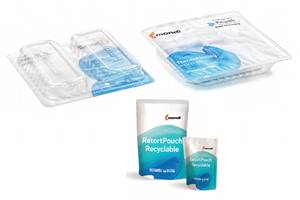Wood on Plastics: Dramatic Shifts and Opportunities in Electronics
Reshoring is a possibility as manufacturing of components will increasingly be conducted closer to market.
Domestic output of computers and electronics has enjoyed solid—and sometimes robust—growth in recent years, according to production data reported monthly by the Federal Reserve Board. But a closer look at the various segments of the U.S. computer and electronics industry shows that two years after the last recession, some segments continue to languish while others are soaring high.
For the year to date, production is up 12% from the same period a year ago. This follows a robust annual gain of 11% in 2010. Not only has production recovered all of the ground it lost during the past recession, but output is 7% above the pre-recession peak.
But a more in-depth analysis shows that within the computer and electronic products category there are both big winners and big losers. The biggest winner by far is the computer and peripheral equipment segment. After registering an annual gain of 13% in 2010, U.S. production is up 17% for the year to date in 2011. Our forecast is for a gain of 15% for this year as a whole, but that is starting to look too moderate. This sector is benefiting from huge corporate profits combined with tax incentives that strongly favor investment in new equipment.
In contrast to the rapid ascent of the computer sector, communications equipment has flat-lined. U.S. production expanded by 2% in 2010, but so far in 2011 it is running about 2% below last year. This segment peaked in 2007 but was hit hard by the recession. Annual production is still about 12% below its pre-recession level.
But the woes of the communications-equipment sector pale in comparison with the precipitous drop that has befallen audio and video equipment. This sector was expanding rapidly in the middle of the last decade, but by 2006 it was already in decline. The recession hit this sector harder than the others, and since then it has continued to taper off. U.S. output of audio/video equipment declined by 13% in 2010. For the year to date in 2011, output is flat versus a year ago. From its peak in 2004 and 2005, production has plummeted by 75% and is showing no signs of recovery.
The vast majority of these products were designed and invented in the U.S., and the U.S. consumes more of these products than any other country. But American processors are not manufacturing them. This is likely to change. The global supply chain that brings foreign-made electronics to the U.S. market is increasingly threatened by a number of factors—geopolitical instability, rising shipping costs, availability of raw materials, and the burgeoning populations of Asia, to name a few. So the audio and video sector may appear to be down and out, but the electronics industry is still quite dynamic, and changes still can occur rapidly.
The final two categories of the computer and electronics industry are semiconductors and navigational, measuring, medical, and control instruments. So far in 2011, the trend and growth rate for the semiconductor industry correlates closely with the computer sector. So production levels here are at an all-time high and accelerating rapidly upward. The instrument sector is exhibiting solid growth since the recession, but not nearly as strong as computers and semiconductors. For the year to date it is up 11% over last year, but the trajectory of the recent trend has plateaued.
WHAT IT MEANS TO YOU
•Manufacturing will increasingly be conducted closer to market, and in some cases repatriated, making new opportunities for molders.
•Changes will be rapid. These products do not mature, they become instantly obsolete. That means molders and tool builders must get involved early in the design process and stay involved.
•Disposal/recycling will be increasingly important and will help drive design, manufacturing, and materials selection.
Related Content
For Extrusion and Injection-Blow Molders, Numerous Upgrades in Machines and Services
Uniloy is revising its machinery lines across the board and strengthening after-sales services in tooling maintenance, spare parts and tech service.
Read MoreUS Merchants Makes its Mark in Injection Molding
In less than a decade in injection molding, US Merchants has acquired hundreds of machines spread across facilities in California, Texas, Virginia and Arizona, with even more growth coming.
Read MoreIn Sustainable Packaging, the Word is ‘Monomaterial’
In both flexible and rigid packaging, the trend is to replace multimaterial laminates, coextrusions and “composites” with single-material structures, usually based on PE or PP. Nonpackaging applications are following suit.
Read MoreMultilayer Solutions to Challenges in Blow Molding with PCR
For extrusion blow molders, challenges of price and availability of postconsumer recycled resins can be addressed with a variety of multilayer technologies, which also offer solutions to issues with color, processability, mechanical properties and chemical migration in PCR materials.
Read MoreRead Next
Beyond Prototypes: 8 Ways the Plastics Industry Is Using 3D Printing
Plastics processors are finding applications for 3D printing around the plant and across the supply chain. Here are 8 examples to look for at NPE2024.
Read MoreFor PLASTICS' CEO Seaholm, NPE to Shine Light on Sustainability Successes
With advocacy, communication and sustainability as three main pillars, Seaholm leads a trade association to NPE that ‘is more active today than we have ever been.’
Read MoreSee Recyclers Close the Loop on Trade Show Production Scrap at NPE2024
A collaboration between show organizer PLASTICS, recycler CPR and size reduction experts WEIMA and Conair recovered and recycled all production scrap at NPE2024.
Read More











